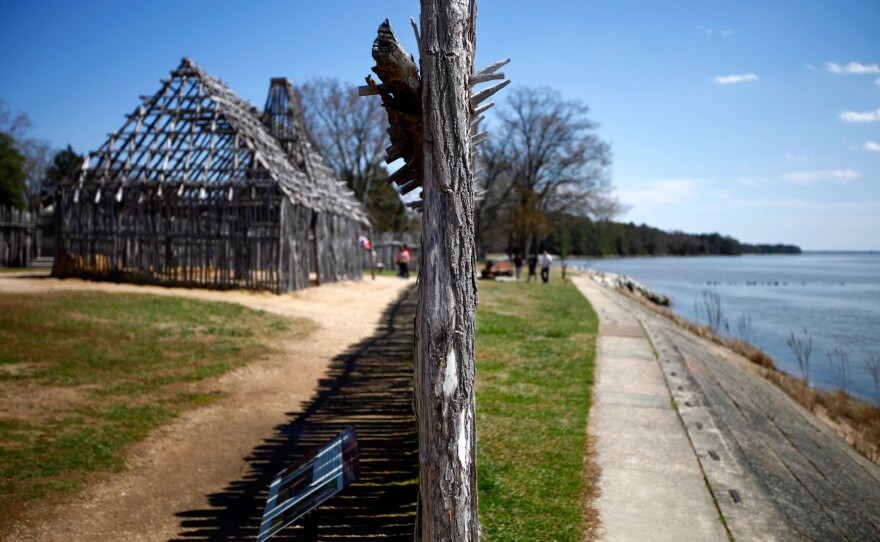
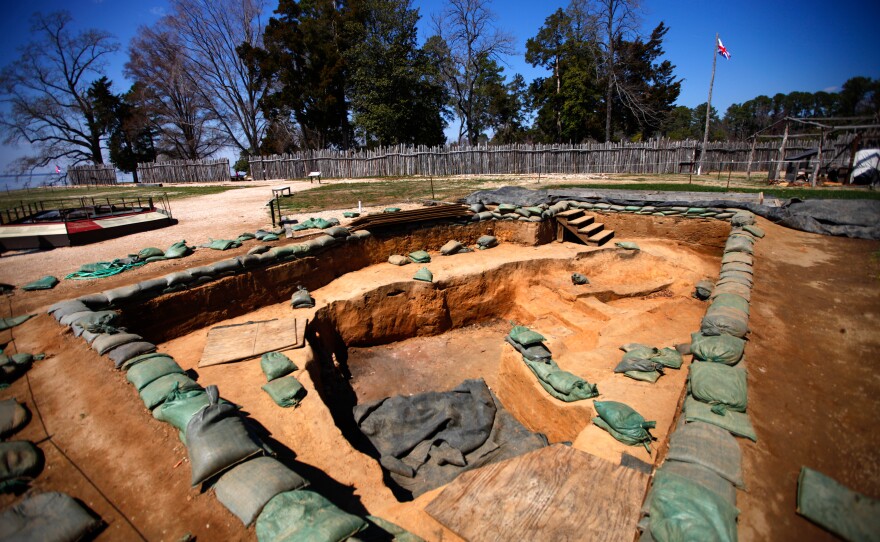
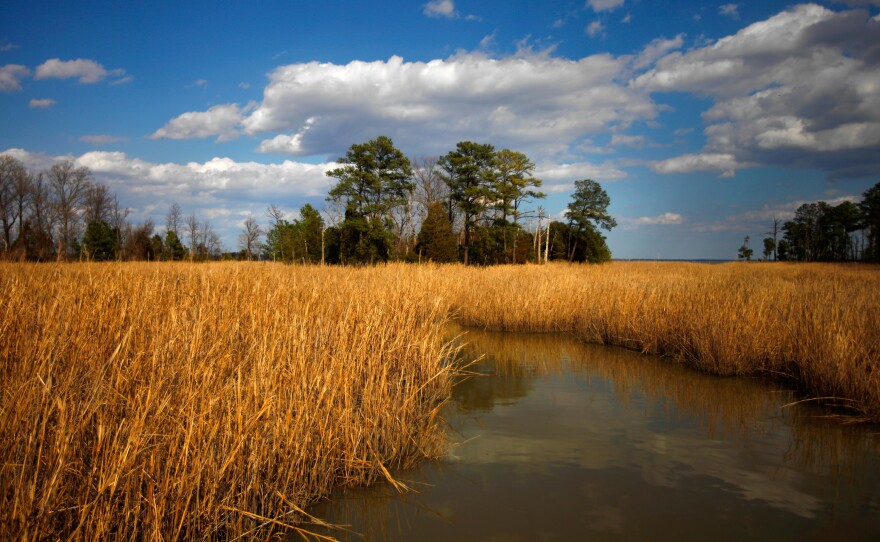
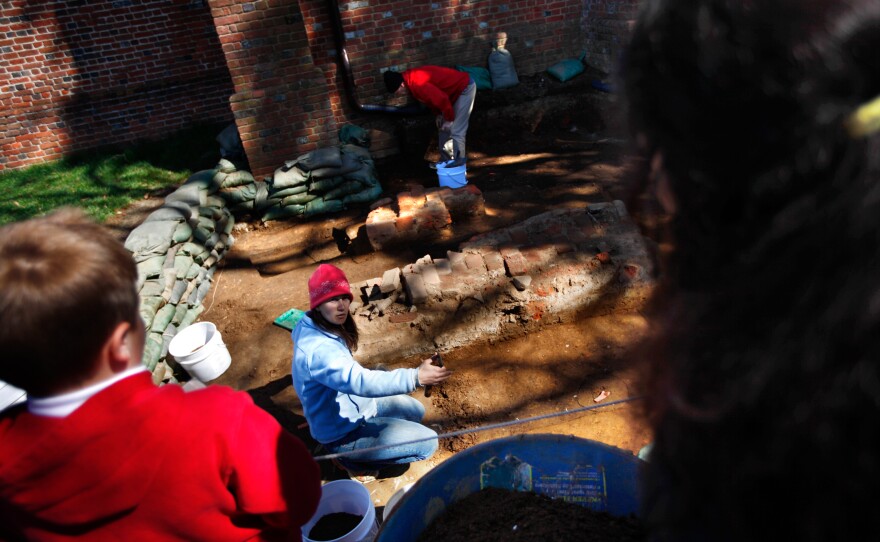
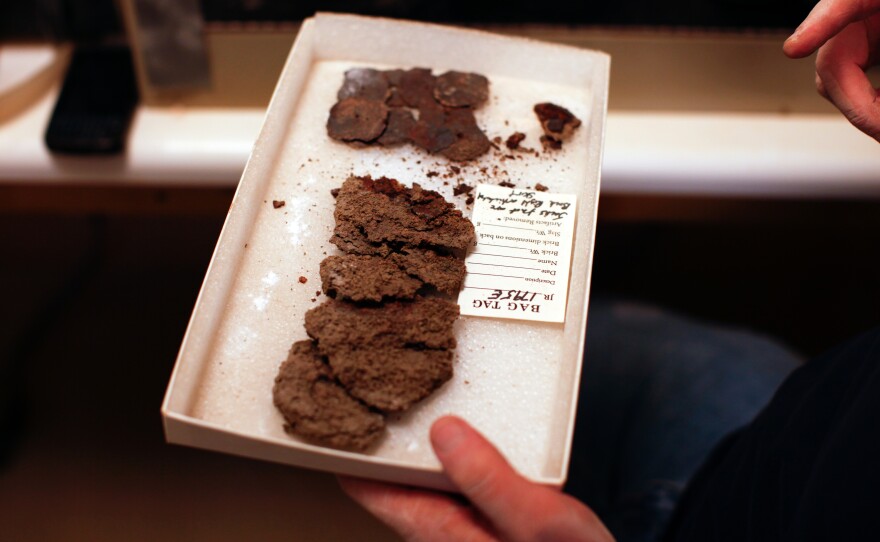
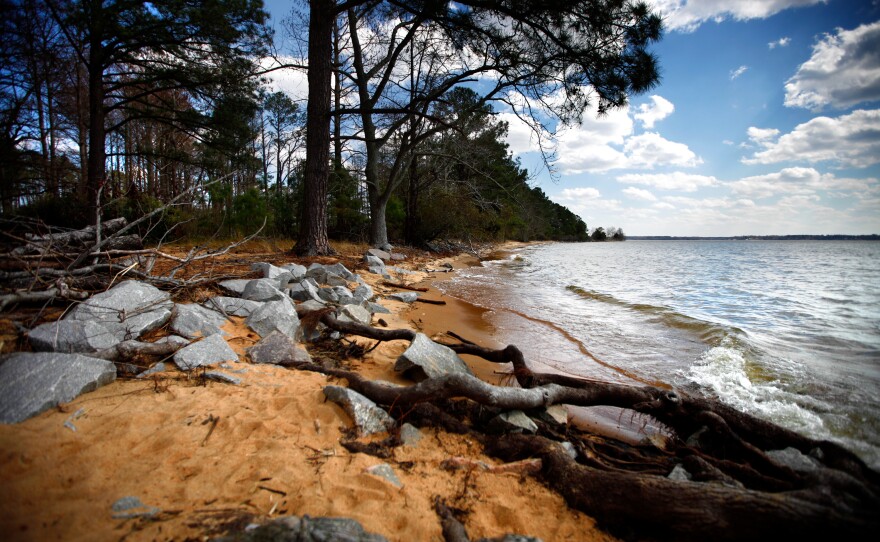
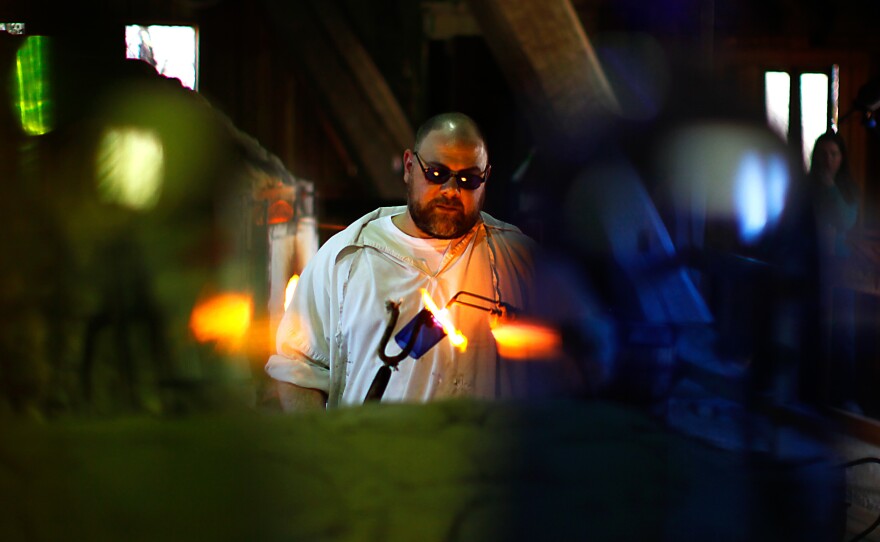
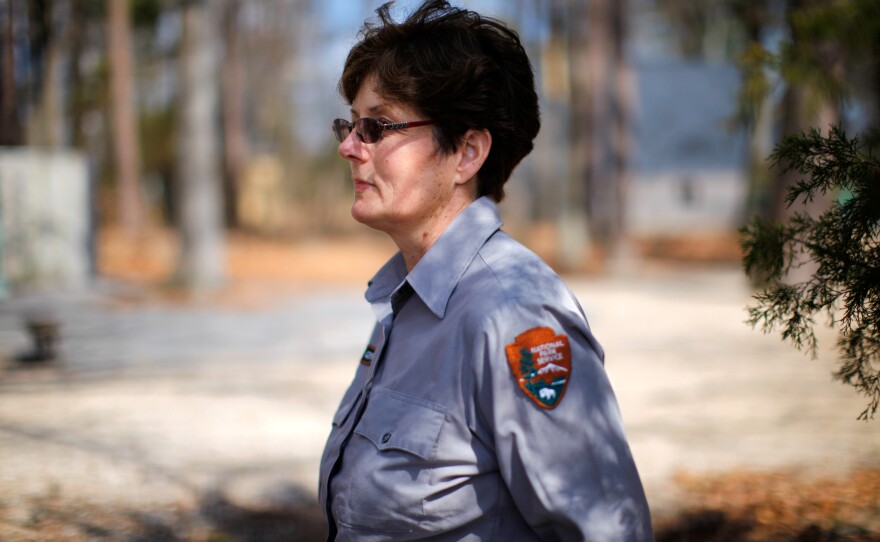
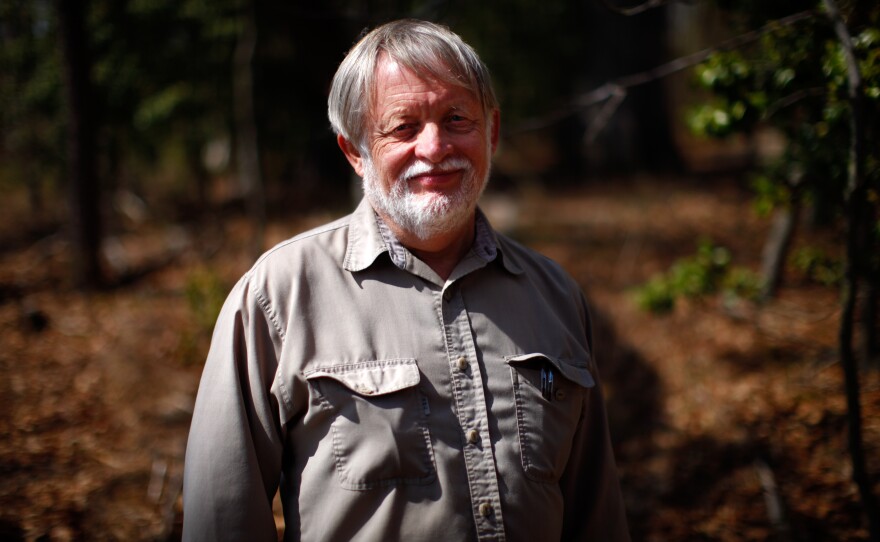
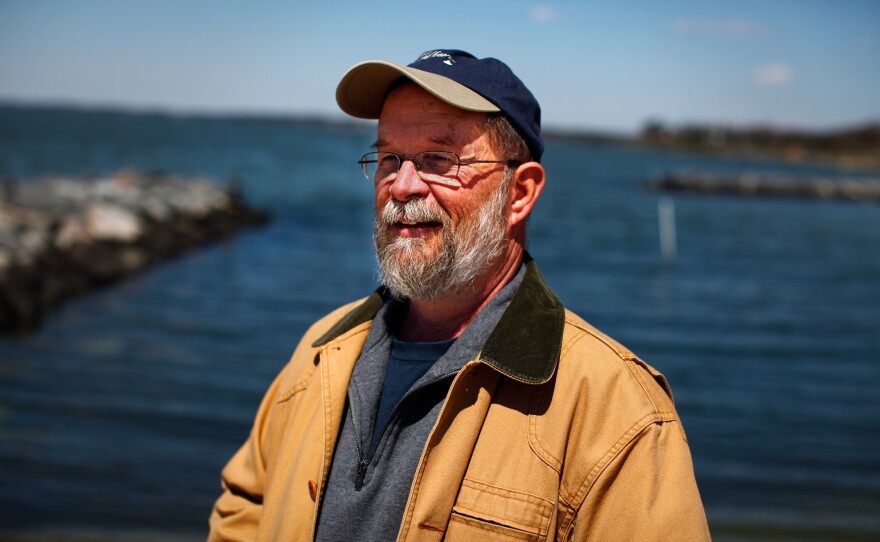
By the end of the century, the birthplace of America may be underwater.
The first successful English colony in America was at Jamestown, Va., a swampy island in the Chesapeake Bay. The colony endured for almost a century, and remnants of the place still exist. You can go there and see the ruins. You can walk where Capt. John Smith and Pocahontas walked. But Jamestown is now threatened by rising sea levels that scientists say could submerge the island by century's end.
You wouldn't know that by looking. In springtime, Jamestown is a carpet of bright new grass. There's oak and loblolly pine, and the James River lies on every horizon. There's a museum and a visitor center and a restored 17th century church.
It's also an archaeological site, one that comes with costumed "interpreters." Beneath a towering stone monument, a young woman in a woolen smock and peasant blouse greets a gaggle of tourists.
"Well, I be Mary Bucke, Mistress Bucke by name," she says with a bouncing, somewhat Cockneyish accent. "They had me to come here into town to greet ya." Mary Bucke is actually Rebecca Suerdieck, providing "living history" to the visitors. "Well, thank heavens you're here where God intended you to be, right here in Jamestown," she says, and smiles.
Bucke/Suerdieck engages the crowd in a tutorial about Jamestown. The first ships arrived in 1607, before the Mayflower did, she says. They were sent by the Virginia Company of London. The colonists weren't planning to build a nation, just make money and keep the Spanish out. "This island fit the bill," she explains. "Militarily speaking it's a very good place to be. The water here be very deep and you can defend yourself."
But now it's that water that threatens to destroy Jamestown. A warming climate heats the oceans and makes them expand. Melting glaciers and ice sheets add more water, and as a result, the sea level is rising.
Climate scientists say that by 2100, oceans could rise worldwide by at least 2 or 3 feet, on average. Coastal flooding will increase, and eventually, without human intervention, Jamestown could go under.
So here's what archaeologists are wondering: Can they save the island as a real place where people can step back through time and see where it all started?
The National Park Service owns part of Jamestown. I meet the Park Service's Dorothy Geyer at the new visitor center (Hurricane Isabel flooded the old one in 2003). Geyer says the Park Service has been thinking about flooding for a long time. "We always knew that the island was at some point going to be in danger of being covered over, but we were thinking it's another 100 years, another 150 years. You know, it could be much -- closer," she says, pausing as though she's not quite comfortable with the reality.
Most of Jamestown is just above sea level, maybe 3 feet in most places. Along the shore, you can see the river already invading through the tall grass. Storm surge reaches farther inland now than it used to. But something else unusual is going on here. As the levels of the sea and the James River rise, says hydrologist Gary Speiran of the U.S. Geological Survey, river water pushes through the soil, then underneath the island.
It gets underneath the freshwater aquifer, Speiran says, and pushes it up, closer to the surface. How often and how much is still a mystery; he has monitoring wells around the island to find out.
So water is invading Jamestown from above and below. And archaeologists know that the ground is riddled with things the colonists and Native Americans left behind. Water could ruin these artifacts.
Sheryl Mays is with Preservation Virginia, which owns part of the island. Only post holes remain at the colonists' original fort, but archaeologists have reconstructed the wooden frame. "It's a wonderful place for a fort," she says. "You can see down the river. You can see the enemy coming up the river." Archaeologists have already recovered some 2 million artifacts here and turned up grave sites.
"It's truly in my mind the most important site in America," Mays says. "This is where it all started."
The stone ruins of the colony's original glass-making factory are down by the river. Today there's a replica of the factory nearby, where glassblowers still make goblets the old-fashioned way, through a metal tube. Glass blower Ron Rogers says he does it just as the colonists would have, except he uses gas-fueled ovens instead of wood-fired ones. "What makes us significant and the reason we're here today is because this was the first industry tried or attempted in the new world," Rogers explains.
Hurricane Isabel flooded the glass factory in 2003, Rogers says, and he fears a rising sea. "I think about it on a weekly basis," he says. "And the ruins are that much closer to the river. If we get another one of those [floods] it could possibly wash away the history here."
And that's the big dilemma at Jamestown: Should archaeologists dig up everything now or leave some in place? Normally, says Geyer, the researchers intentionally leave some artifacts in the ground, "so that for future generations, if there is more science and understanding about the site, they can come back and look at the site and come up with new conclusions, new stories."
But that philosophy doesn't sit well with Beverly Straube, an archaeologist with Preservation Virginia. "It doesn't really apply here ... with what we see is going to happen," she says. "I mean, it would be really irresponsible to do that now, I think." Leaving artifacts in the ground means they could be submerged.
Straube works in the Jamestown "vault" -- a warren of rooms where machines buff and clean artifacts the scientists have dug up. Even in a box, she says, the trove of artifacts tells stories the history books might not. "It's reflecting everything about their lives, you know, from straight pins to weaponry to the food they're eating to games they're playing." She shows me a pair of dice, each one half the size of a sugar cube. The colonists made the dice tiny, she says, so the gaming pieces could be hidden more easily. Gambling was forbidden in Jamestown; it started too many fights.
Straube's vault holds thousands of objects spread out on big tables. There's a child's silver whistle and clay pots the Indians made specifically for the colonists -- baskets with flat bottoms so they'd sit on wooden tables. And there's a gold ring she prizes. "Can you see what's on it?" she asks. It's a skull. "It says 'Memento Mori' around the outside. It's 'Think of Death.' "
That's a chilling thought, given that Jamestown archaeologists recently found the skeleton of a teenage girl they believe was the victim of cannibalism at the hands of starving colonists in 1609.
Straube shows me a small brass rendering of an Indian's face. The colonists gave it to Chief Powhatan, she says, to guarantee safe passage to his messengers. "And we know that Powhatan had a comparable object [that he gave to a leader of the colony]," Straube explains. "It was a chain of pearls that he gave the governor here. He said if ever you send a messenger, make sure he's wearing this, so I know that the message is coming right from you."
I ask if she's found Powhatan's chain of pearls.
"No." Straube laughs. "That would be very cool. Yeah, it wouldn't surprise me at all that something like that would be found."
If there's time.
To find out how much time there might be, I visit Carl Hershner, a climate scientist at the Virginia Institute for Marine Science. We stand on the shore of the York River, not far from Jamestown. "If you look right across the way, that's Yorktown," he says, "where the Revolutionary War was fought and all of that."
Hershner says coastal sites here in Tidewater Virginia may go under faster than elsewhere because many are actually sinking. When the massive glaciers that covered much of North America retreated 10,000 years ago, some regions bounced back up, while others -- like Tidewater -- continue to settle. Pumping groundwater out of the ground also causes land to settle.
"We're one of those states that actually need a nice series of disasters to keep the attention focused on what the change needs to be," Hershner says. "That may sound pretty cynical but that's sort of been the record."
The National Park Service is taking action. At least, scientists and engineers are studying their options for all the Park Service's vulnerable sites. For Jamestown, it could be levees and sea walls. The Service is also monitoring how fast the water is rising.
Saving the island would cost a lot -- money the Park Service doesn't have. Short of some major or miraculous work to save it, Hershner says, Jamestown may not last into the next century. "It'll be a hole in the ground, or a hole in water," he says, "with an old fort and a well at the bottom of it."
Copyright 2013 NPR. To see more, visit www.npr.org.






